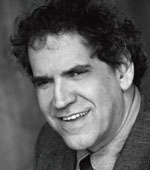By Rabbi Michael Leo Samuel

CHULA VISTA, California — Some anthropologists, like Mircea Eliade, argue that the biblical notion of time is essentially linear, while the Oriental notion of time is cyclical in nature. Eliade was only partially correct. The Jewish holiday cycle certainly has a strong cyclical element. If anything, Jewish concept of time moves in a spiraling direction. It combines the elements of cyclical and linear time.
Whenever we celebrate sacred time, e.g., the Shabbat, it is as though we are celebrating the first Shabbat the world had experienced at the dawn of Creation. Passover is more than just an exercise in Jewish nostalgia, as we celebrate the holiday with matza ball soup and other delicious culinary delights. The Hagadah stresses that “Each person must envision himself as though s/he left Egypt.” Nobody is a product of the present—our values and personal narratives derive from our collective experience of the Exodus. Today’s world is shaped largely by the narratives of its ancient past.
This principle applies no less to how we remember the theme of destruction—as personified by the Tisha’B’Av holiday. For the Jewish people, it is a day of calamity. Our sacred texts narrate how we self-destructed as a people at various times of our noble history.
Although both Temples were destroyed in Jerusalem were destroyed in 586 BCE and 70 C.E., we still remember; we observe these days with fasting and lamentation. One might wonder why do make such a fuss about these tragic events—especially since we have been blessed with the modern State of Israel? Surely we ought to be celebrating one of the greatest miracles of modern history!
Memory is never passive in Jewish history. When we observe how Jews of all denominations are fighting with one another—in Israel—and the Diaspora, it behooves us to remember the lessons of the past we paid for with our blood and tears. Jews have always been their own worst enemies.
Rabbinic wisdom reminds us that the Temple was destroyed because of sinat hinnam, which is usually “causeless hatred.” However, I prefer translating this phrase as “gratuitous hatred,” since the word חִנָּם (hinnam) derives from the root, חֵן (hane), which means “grace” or “gratuitous” or perhaps more accurate, “undeserved,” hence: “undeserved hatred.”
Hurling stones on Shabbat in the holy city of Jerusalem reflects a spiritual disease of intolerance that is far deadlier to the Jewish people than all the missiles shot by the Palestinians in Gaza or from Lebanon. The Talmud (BT Gittin 55b-57a) describes how the zealots purposely burned the food silos rather than make a truce with the Romans, killing anyone who got in their way. When we watch how the Haredim are behaving in Israel today, joining forces with the Palestinians who wish to uproot the Jewish presence altogether, we must wonder whether we have sunk to a new historical low.
How can we as a “chosen people” bear witness to our unique vocation when in reality, we are doing everything to rip our nation apart? The religious fanaticism that propelled our ancestors to fight against Rome ended in the destruction of our homeland. The real enemies of the Jewish people proved to be–not the Romans–but Jews who acted violently toward their own fellow Jewish citizens.
Rabbinic wisdom in the Talmud confront every generation with a grim question that we can never ignore: Have we learned any wisdom from the mistakes of our forbearers? Much of Jewish history can adequately be summed up by the words of the philosopher George Santayana, “To forget the past is to be condemned to repeat it.”
The only antidote to the problem of gratuitous hatred is gratuitous love. Somebody once asked the Chief Ashkenazic Rabbi Abraham Isaac Kook why he befriended so many people regardless of their religious observance, he replied. “The Second Temple was destroyed because of sin’at hinnam, causeless hatred. Now that we are rebuilding our independent state, we must promote ahavat hinnam, “causeless love.” [1] In the face of a nuclear Iran and millions of Arabs who threaten Israel’s existence , it behooves us to take Rabbi Kook’s lesson to heart.
**
Y. Hadari with Z. Yaron, Mishnato shel ha-Rav Kook, (Jerusalem: Amanah, 1976 ), 368, note 53.